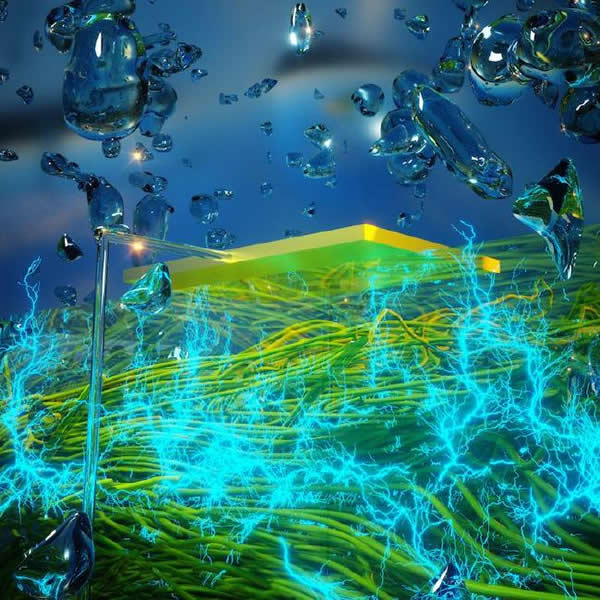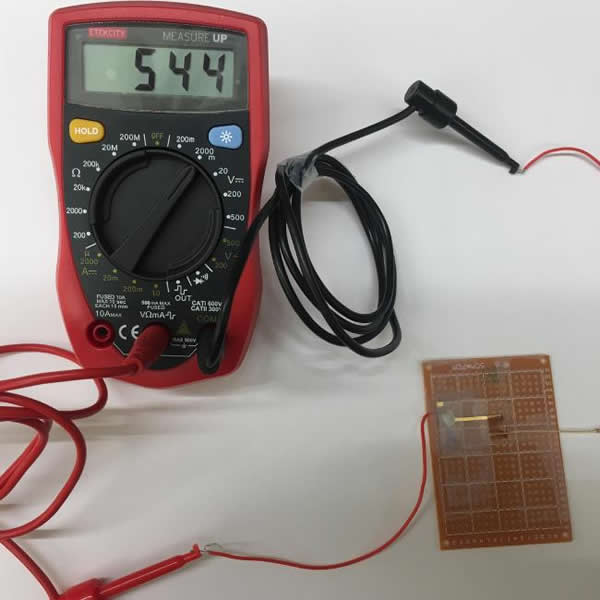Researchers at the University of Massachusetts-Amster have developed a power generation device that uses a protein to generate electricity using moisture in the air. They said that this technology will have a profound impact on future renewable energy, climate change and medical treatment. "Nature" today published that Jun Yao (transliteration) and microbiologist Derek Lovley (Derek Lovley), an electronic engineer at the University of Massachusetts Amster, developed what they called " The "air generator" device uses electrically conductive protein nanowires made of Geobacillus to generate electricity.


In the "air generator", the electrodes are connected to protein nanowires, and the naturally occurring moisture in the air can generate electricity.
Yao Jun said, "It is no exaggeration to say that an air generator can generate electricity out of nothing. It can generate clean energy 24 hours a day, 7 days a week."
Lovell has been working on sustainable bioelectronic materials for the past 30 years. He said, "This is by far the most amazing and exciting application of protein nanowires."
The power generation technology developed by Yao Jun Laboratory has the characteristics of no pollution, renewable and low cost. It can generate electricity even in very dry areas, such as the Sahara Desert.
Lovell said that compared with other forms of renewable energy such as wind power and solar energy, air generators have considerable advantages. For example, they do not require sunlight or wind.
The researchers explained that the air generator only requires a thin layer of protein nanowires with a thickness not exceeding 10 microns. The bottom of the film is an electrode and the top is a smaller electrode. The film can absorb moisture from the air.
The conductivity and chemical properties of protein nanowires and the capillary pores between the nanowires in the film create conditions for generating current between the two electrodes.
The researchers said that the current generation of air generators can power small electronic devices, and they expect this technology to be put into commercial application soon.
In the future, they plan to develop an air generator "patch" to power wearables such as fitness trackers and smart watches, so that these products no longer require traditional batteries. They also hope to develop an air generator version for mobile phones, which will save users the pain of charging their phones.
Yao Jun said, "Our ultimate goal is to develop large-scale systems. For example, this technology will be integrated into decoration materials to provide electricity for consumers' homes. We may also develop independent air generators to supply electricity to the grid . Once our technology is put into industrial application, I expect that the large-scale system we develop will have a significant impact on the production of sustainable energy. "
In order to promote the practical application of Geobacillus, Lovell's laboratory has recently developed a new strain that can further accelerate the production rate of protein nanowires and reduce costs.
He said, "We transform E. coli into protein nanowire factories. With this large-scale production process, the supply of protein nanowires will no longer be the bottleneck for the development of these applications."
They said that the development of air generators demonstrated unusual interdisciplinary cooperation. More than 30 years ago, Lovell discovered Geobacterium in the Potomac River sludge. Later, his team discovered its ability to produce conductive protein nanowires.
Before joining the University of Massachusetts-Amster, Yao Jun worked at Harvard University for several years, using silicon nanowires to design an electronic product. The purpose of their cooperation is to explore whether the protein nanowires produced by Geobacillus can be used in electronic products.
Xiaomeng Liu, a doctoral student in Yao Jun's laboratory, is developing a new sensor device. "I saw this phenomenon. When the nanowire is connected to the electrode, the device generates a current. I found that it was exposed to the air. It is an indispensable condition for it to generate electricity. Protein nanowires can absorb moisture, and voltage will be generated on the device. "
In addition to air generators, Yao Jun's laboratory has developed several other applications of protein nanowires. He said, "The curtain of a new era of protein-based electronic devices has just begun."
Baoji zhipu non-ferrous metal processing co., LTD., is the best of the domestic molybdenum processing enterprises, according to the customer's requirement to customize the production of various specifications of the molybdenum foils, company USES is the best of the domestic high-quality raw materials, first-class production technology, the top production equipment
Molybdenum Foil,Durable Molybdenum Foil,High Purity Molybdenum Foil,Good Stability Molybdenum Foil
Baoji Zhipu Non-Ferrous Metals Processing Co., Ltd. , https://www.czpmow.com
